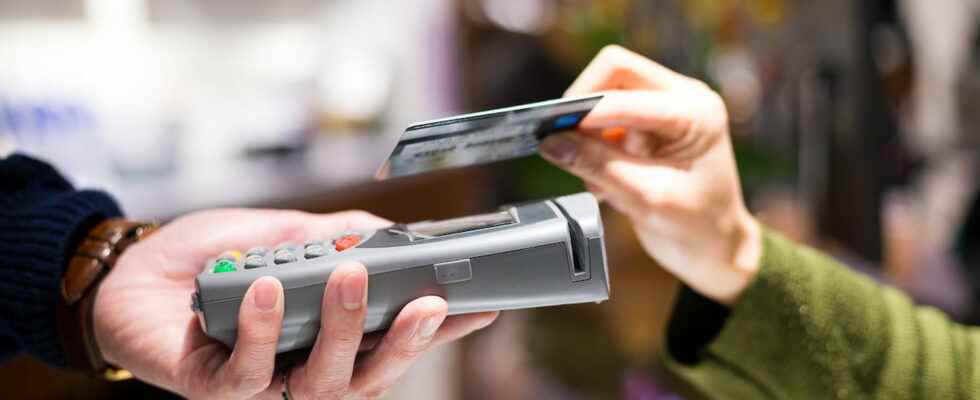Payment by contactless bank card is becoming increasingly popular, especially since the ceiling rose to 50 euros during the pandemic. A limit that could even be raised to 80 euros. But is it really useful?
Contactless payment, which has been around for years now, is extremely practical: simply place the bank card on a payment terminal to pay for the purchase, without having to enter the secret code. Technology has gradually become part of the daily life of the French, especially with the pandemic. Indeed, faced with the risk of infection, contactless has been promoted as a barrier gesture in its own right, so much so that, long reluctant due to their fears about the security of payments, many consumers have ended up getting started. . And by loving this fast payment method. According to the Banque de France, contactless accounted for 57% of in-store card payments in 2021, while the latest report from the Banque Populaire-Caisse d’Épargne group (BPCE) reveals that the amount of expenditure made by contactless payment will grow by 23% in 2022.
Contactless: a practical and secure means of payment
Admittedly, even with contactless payment, you still sometimes have to enter the bank card code to validate a transaction. A measure that stems from the payment limit – which is 50 euros after having been limited to 20 euros at the start of contactless payment, then to 30 euros in 2017 – but also, and above all, from a security system governed by a algorithm that depends on the frequency (five consecutive transactions) and the amounts spent (150 euros of cumulative successive contactless payments). The determination of this level had precisely taken place at the time of the pandemic and had immediately led to an explosion of transactions. The question therefore arises as to whether, subsequently, this level will increase in order to further popularize this method of payment.
The journalists of Moneyvox recently spotted a discreet allusion to an increase in the contactless payment limit to 80 euros in a press release from SumUp, the specialist in mobile payment terminals: “the passage of the ceiling from 30 to 50 euros by the French Banking Federation in May 2020, soon to be raised to 80 euros, has contributed to strengthening the attractiveness and adoption of this method of payment by consumers”. This is something to question. The company did not wish to say more and contented itself with replying that “As the deadline for this change is not yet known precisely, I suggest that you discuss it later”.
Contactless payment: not reserved for bank cards
So, is an increase in the limit to 80 euros possible? Yes, but not right away. Indeed, the limit of 50 euros for a unit contactless payment is enshrined in European regulations and its change would require a new European regulation and, upstream, a recommendation from the European Banking Authority. By the time the regulatory mechanism kicks in – and it is a long time – it may not be before 2026…
But before knowing if it is possible, perhaps we should ask ourselves if it is really useful? According to Nicolas Miart, the consulting director at Galitt interviewed by Moneyvox, it is not, because the increase in the ceiling to 50 euros has already made it possible to cover the average basket of a payment by card – i.e. 41 euros in 2022 according to BPCE – which had also led to a sharp increase in the use of contactless. Going to 80 euros would therefore not be of much interest. Especially since the cumulative limit of 150 euros must be taken into account before the payment terminal requests a transaction by contact – a measure intended to limit the damage in the event of theft of the bank card. A limit of 80 euros would therefore reduce the number of possible payments without a code.
This is without taking into account the deployment of new means of payment which can circumvent this limit. Indeed, in the euro zone, it is already possible to use NFC-compatible smartphone solutions – for near field communication, or near-field communication, a technology on which all contactless systems are based, including for transport tickets – such as Apple Pay, Samsung Pay or even Google Pay by overcoming this constraint. Similarly, a new generation of payment terminals – baptized PIN Online – makes it possible to memorize the secret code of the bank card directly in a smartphone, which avoids having to insert the card into the terminal, regardless of the amount to be paid. That solves part of the problem… by imposing the smartphone as an all-purpose tool, to the detriment of those who don’t know how to use it well, especially the elderly. but that’s another debate, more societal…
